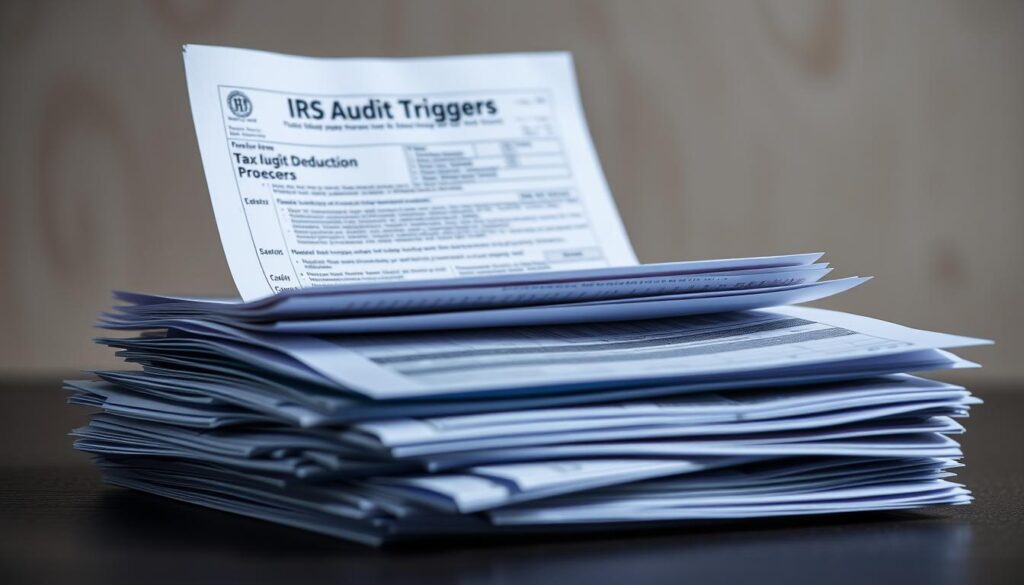Tax season can be stressful, but avoiding the wrong steps protects your finances and peace of mind. This guide focuses on things not to do with your tax return, helping you sidestep common tax mistakes that lead to penalties or missed savings. Learn actionable tips to file correctly and stay compliant.
Key Takeaways
- Missing deadlines leads to fines and complications.
- Misreporting income or deductions triggers audits.
- Unsecured personal data increases fraud risks.
- Ignoring state taxes adds unexpected liabilities.
- Skipping reviews may cost you potential refunds.
Don’t Ignore Important Deadlines
Missing tax deadlines can lead to tax return penalties and tax filing errors. Knowing key dates protects your finances and avoids legal issues. Stay ahead with these steps:
Understand Filing Deadlines
- April 15: Federal tax deadline for most filers.
- Quarterly payments: Self-employed individuals must pay estimated taxes April 18, June 15, September 15, and January 15.
- State deadlines vary; check your state’s requirements.
Consequences of Late Filing
Ignoring deadlines triggers automatic fees. The IRS charges penalties for both late forms and unpaid taxes:
| Penalty Type | Rate | Example |
|---|---|---|
| Late Filing Penalty | 5% of unpaid taxes/month | $1,000 unpaid → $50/month |
| Late Payment Penalty | 0.5% of balance/month | $2,000 owed → $10/month |
| Interest Charges | Variable rate | Accumulates daily |
Extensions and What They Mean
File Form 4868 by April 15 for a six-month extension. Extensions delay paperwork submission but not payment deadlines. Pay what you can by the due date to reduce tax return penalties.
Avoid Common Tax Filing Mistakes
Tax forms might seem straightforward, but small oversights can lead to big problems. The IRS flags errors like unreported income, wrong deductions, and missing signatures as tax fraud red flags. Learning to avoid these common tax mistakes keeps your return accurate and secure.
Misreporting Income
Forgetting income sources is a frequent error. The IRS matches your report with forms like W-2s and 1099s. Missed freelance earnings, rental income, or unemployment benefits create mismatches. Example: A contractor earning $2,000 in gigs but not listing it risks an audit notice.
Incorrect Deductions
Overstating deductions triggers scrutiny. Common pitfalls include:
- Charitable donations without receipts
- Home office deductions without workspace photos
- Mixing personal and business expenses
Always keep proof for every deduction claim.
Failing to Sign the Return
A missing signature invalidates your return. Even e-signed forms require verification. Both single and joint filers must sign—otherwise, the IRS treats it as incomplete.
| Red Flag | Example | Solution |
|---|---|---|
| Unreported income | Freelance work not listed | Track all payments via apps like QuickBooks |
| Excessive deductions | $5,000 in unreceipted donations | Save bank statements and invoices |
| Unsigned forms | Missing electronic signature | Double-check sign-off before submission |
If flagged, use Form 1040-X to correct errors within three years. Stay proactive to avoid penalties!
Don’t Overlook Documentation
Proper records are your shield against IRS audit triggers and tax filing errors. The IRS requires keeping documents for at least three years, longer for property or business records. Organized files ensure you’re ready for audits and maximize deductions.

Importance of Keeping Records
Missing documents can turn valid deductions into denied claims. For example, unreceipted expenses become tax filing errors if auditors question them. Keeping proof ensures accuracy and compliance.
Types of Documents to Save
- Income forms (W-2s, 1099s)
- Expense receipts (travel, home office, donations)
- Investment statements (stocks, retirement accounts)
- Property tax bills and purchase records
- Previous tax returns and correspondence
Organizing Your Tax Papers
Create a system that works for you:
- Digital backups: Scan receipts and store files in secure cloud accounts like Dropbox or Google Drive.
- Physical files: Use labeled folders for each tax year. Shred outdated records responsibly.
- Annual review: Update records yearly to avoid clutter.
A well-organized system reduces stress and safeguards your finances. Protect your rights and credits by staying organized.
Never Share Personal Information Carelessly
Protecting your identity during tax season is critical. Scammers exploit personal details to commit tax fraud red flags, which can lead to severe tax evasion consequences. Learn how to spot risks and safeguard your data.
Phishing Scams to Watch For
Scammers often mimic government agencies or tax preparers. The IRS never contacts taxpayers via text, email, or social media demanding immediate payment. Here’s what to watch for:
“The IRS will never ask for your Social Security number through unsolicited contact.” – IRS Identity Protection Tips
- Urgent threats: Fake deadlines to scare you into sharing data
- Phony refunds: Requests for bank details to “claim” a refund
- Ghost preparers: Unlicensed tax preparers stealing client info
| Red Flag | Action |
|---|---|
| Unexpected requests for financial records | Contact the IRS directly via official channels |
| Pressure to wire money | Hang up and report to phishing@irs.gov |
Secure Communication Practices
Adopt these habits to stay safe:
- Use encrypted networks when filing taxes online
- Require credentials for tax preparers (check IRS.gov for verified preparers)
- Enable two-factor authentication on tax accounts
Protect your Social Security number and use the IRS Identity Protection PIN if you’ve been a past victim. If you suspect fraud, act fast to limit damage.
Don’t Fail to Review Your Return
Before hitting submit, take time to review your tax return. A quick glance won’t cut it—thorough checks can catch errors that lead to tax deductions to avoid or common tax mistakes. Start by verifying names, Social Security numbers, and addresses. Misspellings here could delay refunds or trigger audits.
- Confirm all income sources match W-2s and 1099s.
- Check math in every line item, including credits and deductions.
- Ensure all forms and schedules are attached and complete.
Use tax software features like audit risk alerts or deduction analyzers to spot oversights. For instance, overlooking the student loan interest deduction or energy-efficient home credits could cost you hundreds. Many security experts advise reviewing e-file confirmations to prevent data errors or fraud.
“A second pair of eyes can catch what rushed prep misses,” warns the IRS. Double-check even if a professional prepared your return.
Set reminders to review at least a week before deadlines. Last-minute rushes lead to missed savings and easy mistakes. Let technology help—year-over-year comparison tools highlight discrepancies. Remember, catching errors early avoids penalties and ensures you claim every eligible tax deduction legally.
Avoid Spending Your Refund Immediately
Your tax refund is your own money returned to you—so treat it as a chance to build stability, not a reason to splurge. Tax refund delays can disrupt plans, but strategic allocation ensures your funds work harder for you. Start by prioritizing long-term goals over instant gratification.

Long-Term Financial Planning
Use the 50/30/20 principle to divide your refund: 50% for financial foundations, 30% for future security, and 20% for immediate needs. This approach balances urgency with growth.
| Category | Allocation | Examples |
|---|---|---|
| Financial Foundations | 50% | High-interest debt repayment, emergency fund growth |
| Future Security | 30% | IRA contributions, education savings plans |
| Immediate Needs | 20% | Budget-friendly upgrades, small debt payments |
Building an Emergency Fund
Aim for 3–6 months of expenses in a separate savings account. Use IRS Form 8888 to split your refund directly into accounts, bypassing temptation. For instance, auto-deposit 50% into emergency savings and 30% into retirement.
Smart Refund Allocation Tips
- Pay off credit card balances first to avoid interest traps
- Open a dedicated savings account for tax refunds to avoid mixing with everyday funds
- Review IRS guidelines on direct deposit timelines to avoid waiting for tax refund delays
Remember: Every dollar counts. Even small steps like redirecting $200 to an emergency fund can grow into security over time.
Don’t Forget About State Taxes
While federal tax returns get most of the attention, neglecting state obligations can lead to tax filing errors and costly tax return penalties. Over 41 states and D.C. require income taxes with unique rules. Missing deadlines or residency requirements risks fines and audits.
Residency status matters most. If you moved, worked remotely, or earned income across borders, multiple filings may apply. State tax codes differ wildly—some states tax retirement income, offer different deductions, or set earlier deadlines than the IRS. For example, California’s standard deduction differs from federal rules, altering refund calculations.
- Check residency: Part-year residents often file multiple returns.
- Compare deadlines: Some states require filings in April, others as early as March.
- Watch for reciprocity: Working in one state but living in another? Verify tax agreements.
“State taxes aren’t an afterthought—they’re a legal requirement tied to where you live and work,” says the National Association of State Boards of Public Accountancy.
Changes on your federal return? States require matching updates. Forgetting this link could trigger audits. Over 9 million taxpayers face state-level penalties yearly for missed filings, per 2023 IRS data. Stay compliant by:
- Tracking income sources across all states
- Reviewing state-specific forms annually
- Amending returns if federal adjustments apply
Ignoring these steps risks fines up to 10% of owed taxes in states like New Jersey. Protect your refund by treating state returns as seriously as federal obligations.
Steer Clear of Tax Refund Anticipation Loans
Refund anticipation loans (RALs) promise quick cash but often trap users in costly cycles. These short-term loans use your tax refund as collateral, charging fees that can cut refunds by hundreds. For example, a $2,000 refund might lose 10-15% upfront, making them pricier than alternatives.
Understanding RALs
RALs require fees like origination charges and high APRs—often exceeding 300% annually. Lenders deduct these costs upfront, leaving borrowers with far less than expected. For instance, a $1,000 refund could shrink to $700 after fees. This creates a cycle where borrowers might struggle to repay the loan, risking further financial strain.
Risks vs. Benefits of RALs
While RALs provide fast cash, their downsides outweigh the benefits. Compare them to free options:
- Risks: High fees, debt traps, and tax refund delays if paperwork errors occur
- Benefits: Funds within hours instead of waiting weeks
“RALs may save days but cost months of savings,” says the IRS, urging taxpayers to explore alternatives.
Choose safer options like direct deposit, which delivers refunds in 21 days, or IRS Free File for free preparation. Community assistance programs also offer interest-free advances. If emergencies arise, consider budgeting plans instead of accepting RAL terms.
Though RALs might seem necessary for urgent needs like avoiding eviction, their long-term costs outweigh short-term gains. Patience and smart planning avoid both tax refund delays and the hidden tax evasion consequences tied to rushed decisions. File early and electronically to speed up returns safely.
Don’t Mix Personal and Business Finances
Blurring the lines between personal and business money moves can trip IRS audit triggers and complicate your tax filings. For freelancers and small businesses, clear financial separation isn’t just smart—it’s essential to avoid headaches at tax time and beyond.
Keep Business and Personal Funds Apart
Open a dedicated business bank account and use separate credit cards for work expenses. Tracking gas, supplies, or equipment costs becomes easier when purchases aren’t tangled with groceries or rent. Apps like QuickBooks or even spreadsheets help categorize spending so you don’t accidentally claim tax deductions to avoid that the IRS might reject later.
Why It Matters for Your Taxes
Mixed records make it hard to prove legitimate business expenses during an audit. Clear financial trails show the IRS your operations are serious, not hobbies. For example, if you use a personal card for business meals, you risk losing 50% of the deduction under IRS rules. Separate tracking ensures you capture every valid expense and avoid red flags.
Even small entrepreneurs can start by setting up automatic business expense categorization. When life gets busy, reimburse yourself promptly for any accidental personal payments to keep records clean. Over time, this habit builds a stronger financial picture for loans, investors, and—most importantly—tax season peace of mind.

A writer, editor, and publisher with a knack for crafting informative articles.

